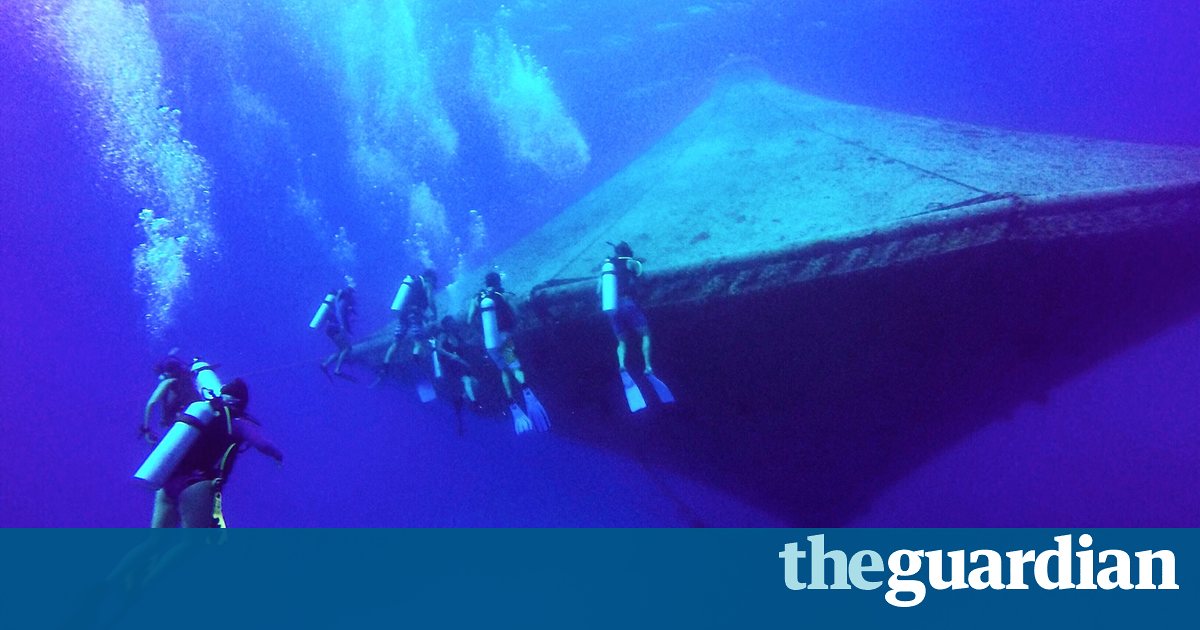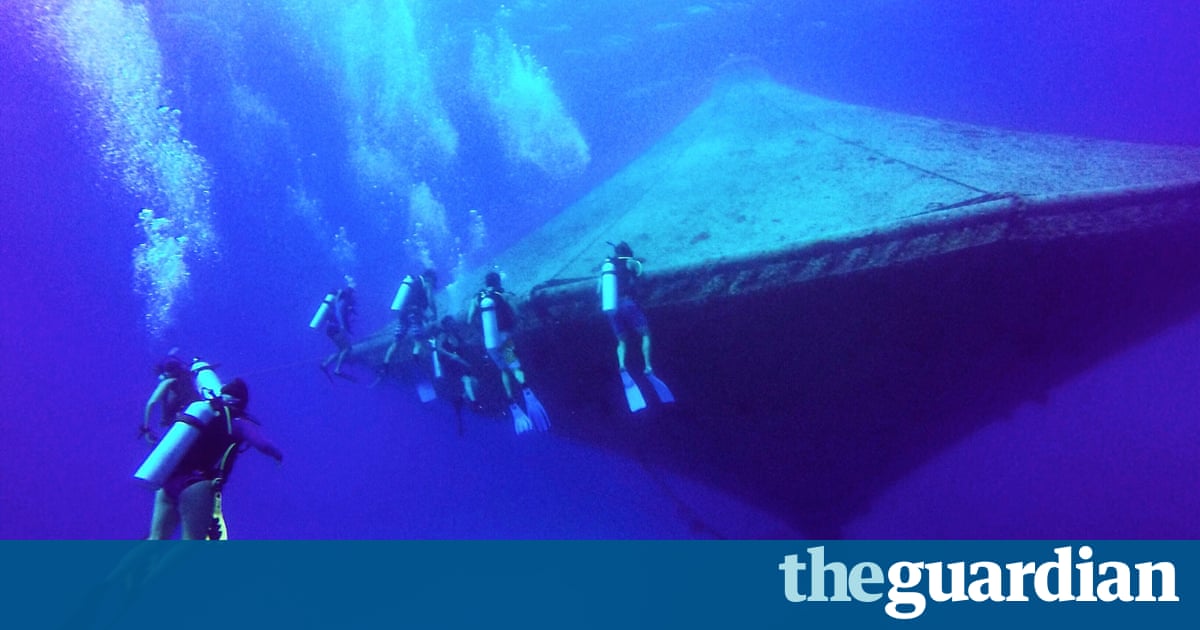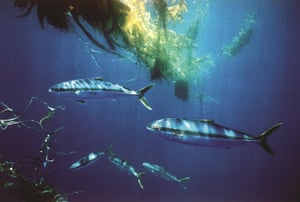The government wants more offshore fish farms, but no one is biting

The US imports about 91% of its seafood, half of which is farmed in aquaculture facilities. Should the US do more to kickstart its own industry?

Off the coast of San Diego, Americas eighth largest city, commercial fishermen harvest about 1,100 metric tons of seafood from the Pacific every year.
That sounds like a lot. But it isnt much to Don Kent, who says he can do better with just one fish farm.
If Kent gets his way, he would raise 5,000 metric tons of yellowtail jack and white sea bass in a grid of net pens measuring about a square mile, anchored four miles off San Diego in federal waters. The species are prized in Southern California sushi restaurants, which now serve their customers imported fish almost exclusively, most of it from China, Japan, Greece or Chile.
The US imports about 91% of its seafood. Whether consumers know it or not, about half of that is farmed in aquaculture facilities much like the one Kent wants to build. While the federal government has permitted shellfish farming for years, it didnt allow farming of finfish such as bass and salmon until earlier this year.
Why are we buying all of our yellowtail from farms in Japan when I could grow them four miles off our coast and lower the carbon footprint and the trade deficit at the same time? says Kent, president and CEO of Rose Canyon Fisheries, which aims to build the project. This is done around the world. Its just not done here.
But Kent isnt likely to get approval soon, because the location is all wrong. The government is eager to promote offshore fish farming to alleviate pressure on overfished wild species. But it wants that to happen first in the Gulf of Mexico. The National Marine Fisheries Service adopted its first rules for finfish farming in federal waters for the gulf region in January this year. Next up is the Pacific Islands region around Guam, Hawaii and Samoa, where in August the agency began preparing a report to analyze the environmental impact of aquaculture.
The mismatch between the proposals location and the new rules reflects the governments difficulties in incubating a new industry. Kents proposal, first submitted in October 2014, is the only fish farm proposal that the federal government has received so far. A lawsuit filed in February contends the new rules for the Gulf of Mexico could significantly harm the environment and commercial fishing, and it may be keeping away potential applicants who want to wait for the cases resolution before filing plans.
We shouldnt be doing this on an industrial scale until we have better information, says Marianne Cufone, a professor of environmental law at Loyola Law School in New Orleans. Its very possible the Gulf of Mexico will be altered forever if we move forward.
Raising fish in coastal farms isnt a new phenomenon. It just hasnt happened yet in federal waters, which range from 3-200 miles offshore. Several states allow aquaculture in coastal waters under their control, which extend out three miles from shore, including Maine, Washington and Hawaii.

Sales by the US aquaculture industry totaled about $1.3bn in 2013, according to a periodic census by the US Department of Agriculture. Thats a 25% increase over the prior census in 2005. Finfish account for about half the total, with catfish and trout both freshwater species dominating the industry.
Offshore aquaculture works mostly the same everywhere: fish live in an enclosure created with nets that dangle underwater from floating rings or platforms on the surface. The whole apparatus is anchored to the ocean floor.
The fish remain in the nets for as long as two years, from the time they are fingerlings. They are fed a diet that may include other fish waste from canneries and commercial fishing and processed pellets that may include corn, soybeans and other vegetables along with fish byproducts.
The US is currently a small player in running coastal fish farms, though its long coastlines and appetite for seafood could change that. Norway leads the world, followed by China, Chile, Indonesia and the Philippines, according to the UN Food and Agriculture Organization.
Opening up the far offshore could ease the nations trade imbalance in fish commerce and rebuild waterfront industries that have slipped away as a result of overfishing, says Dianne Windham, aquaculture coordinator for the West Coast region of the National Marine Fisheries Service.
I think we actually have a great opportunity here to pursue the responsible and sustainable development of offshore aquaculture, and set the standard for what it ought to look like, Windham says.
The opportunity was slow to materialize, though. The new rules for the Gulf of Mexico took 14 years to complete. Congress repeatedly considered and then failed to pass legislation to legalize offshore fish farming. So the fisheries services stepped in to regulate the industry under the Magnuson-Stevens Fishery Conservation and Management Act, a law passed in 1976 to govern commercial fishing.
Its a wonderful opportunity for the Gulf of Mexico, but its been a long time coming, says Joe Hendrix, president of Seafish Mariculture in Houston, Texas, an aquaculture consulting group. Its difficult to implement these things because of a lot of ignorant people who have misplaced concerns.

Hendrix is referring to critics who say their concerns are very real. This includes the risk of farmed fish escaping from their nets and breeding with wild fish and competing for food; water contamination hot spots caused by fish excrement leaving the nets; and pharmaceuticals and genetic modifications used in some aquaculture operations. (The US Food and Drug Administration allows 18 different drugs to be used on farmed fish).
For instance, the new federal rules for the Gulf of Mexico require permit holders to report to the government only major escapement events, defined as 10% or more of cultured fish escaping from a pen. Anything less doesnt require reporting but may still disrupt the feeding and breeding of wild species.
Interbreeding is a concern because farmed fish become a weaker genetic line, less able to avoid illness and parasites and to survive the hardships of the open ocean.
To date, weve been unsuccessful in preventing escape from aquaculture facilities, says Cufone, who is also executive director of the Recirculating Farms Coalition, a nonprofit that promotes aquaponics, a type of aquaculture in which fish and food crops are grown together. The group is also a plaintiff in the lawsuit to halt the aquaculture rules for the gulf. Theres no reason to think we would be 100% successful in the Gulf of Mexico, either.
Examples of escapes are plentiful. In January 2015, for example, some 51,000 farmed Atlantic salmon escaped from their pens off the coast of New Brunswick, Canada. In another case, farmed salmon have been found in Canadas Magaguadavic River and the rivers of British Columbia during spawning season.
Hendrix and others in the industry counter that escaped fish are not a problem because, raised in pens and hand-fed, they lack the fitness to survive for long in the open ocean. In other words, theyll be eaten by wild fish before they have a chance to compete for food or interbreed.
The new aquaculture rules for the Gulf of Mexico also have no conditions governing fish welfare or humane treatment of fish. Other nations, including Great Britain, have recognized that fish feel pain and stress, and that aquaculture facilities should be designed and managed to prevent such suffering.
The US federal government should have fish welfare rules in place before opening the sea to aquaculture, says Bernard Rollin, a professor of ethics and animal sciences at Colorado State University.
Its well known by fish biologists that fish are enormously susceptible to stress, noise and crowding, says Rollin, a pioneer in the field of agricultural animal welfare. If you screw it up, theyll all die.
The fight over developing a sustainable industry means a longer wait for fish farm developers like Kent, who grew up in San Diego and remembers the city waterfront was once known as Tuna Town because it served a huge tuna fishing fleet with businesses that built boats, repaired equipment, caught and processed fish. That work mostly left for Asia when regulations and public sentiment arose in the 1970s against the bycatch of dolphins by tuna fishermen.
So youve got a working waterfront where the only work its doing is entertaining people. Its not feeding people, says Kent, who is also CEO of Hubbs-SeaWorld Research Institute, a nonprofit arm of SeaWorld Parks and Entertainment.
Kent says his $50m Rose Canyon project would generate 200 jobs for the region and employ newer cage technology that is submersible, a design that prevents the cages from getting destroyed by tussling waves during storms.
Rose Canyon already faces opposition from environmental groups, and commercial fishermen are concerned that aquaculture could affect the wild fishery.
Peter Halmay, a commercial fisherman based in San Diego and founder of the San Diego Fishermens Working Group, worries that farmed fish could develop viruses during captivity that would be released into the ocean and devastate native fish.
Hed rather see the government continue working to revitalize commercial fishing. For example, catch limits have been in place for years to limit harvest of important species, especially numerous varieties of rockfish. These programs have been successful, he says, and it will soon be time to increase catch limits again, a move that holds a lot of promise for the industry.
Our vision is for a vibrant working waterfront based on the capture of wild fish, Halmay said. Only if this project is a supplement to this vision will it work.